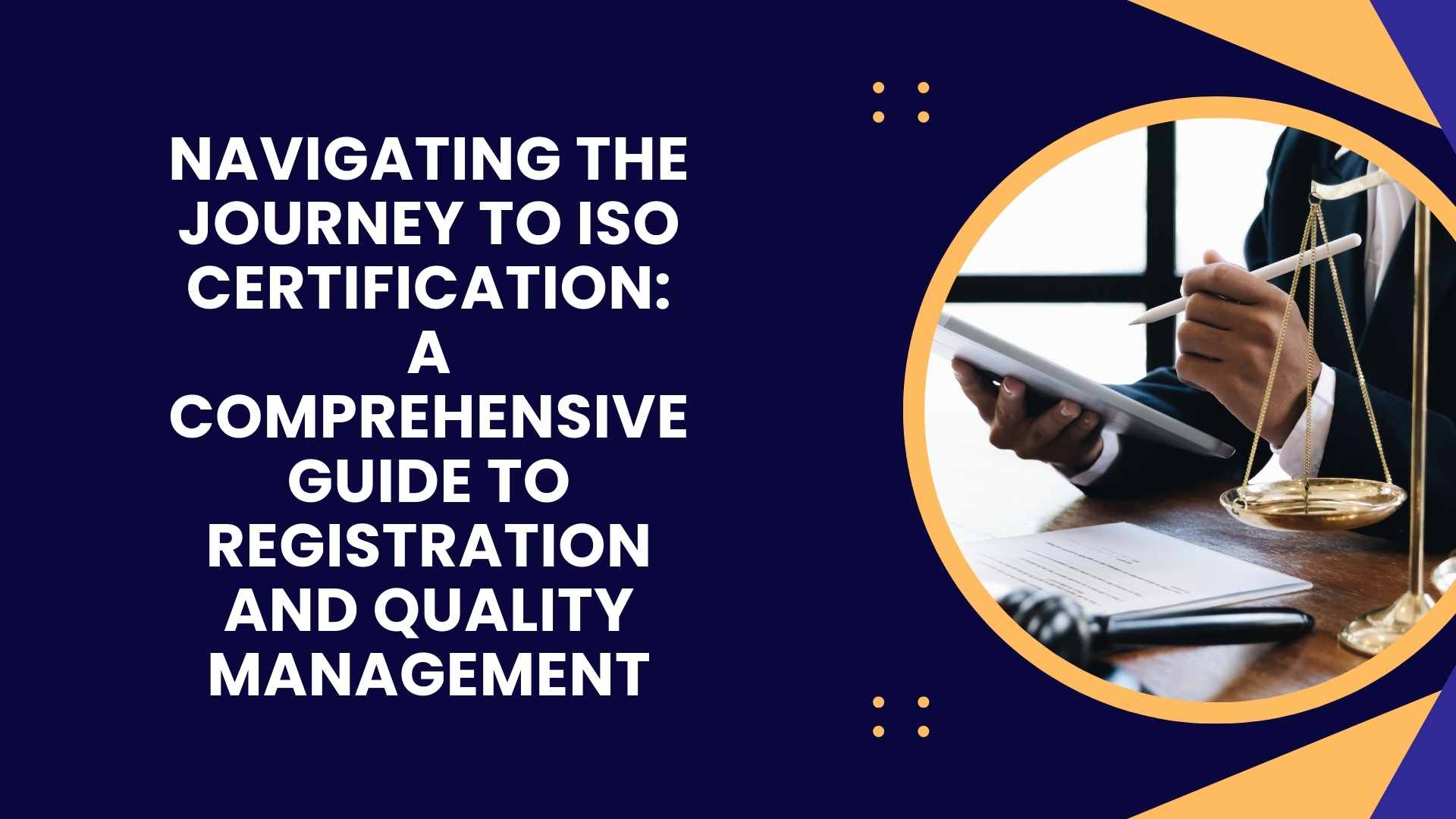Introduction
Achieving ISO certification is a significant milestone for any organization, symbolizing a commitment to quality and operational excellence. ISO (International Organization for Standardization) standards are internationally recognized benchmarks that enhance business processes, improve customer satisfaction, and open doors to new market opportunities. This guide provides a detailed roadmap for organizations seeking ISO certification covering the registration process, quality management principles, and best practices for successful implementation.
Understanding ISO Certification
ISO certification involves adhering to standards set by the International Organization for Standardization. These standards cover a range of industries and functions, from quality management to environmental impact. The most common ISO standards include:
-
ISO 9001:
ISO 9001 is a globally acknowledged standard that specifies the criteria for implementing a Quality Management System (QMS).. It focuses on enhancing customer satisfaction by ensuring consistent quality in products and services, meeting regulatory requirements, and driving continuous improvement. By implementing ISO 9001, organizations establish a structured approach to quality management, which includes setting clear quality objectives, maintaining effective documentation, and fostering a culture of ongoing improvement. This standard helps organizations improve operational efficiency, increase customer satisfaction, and achieve business excellence.
-
ISO 14001:
ISO 14001 is a globally recognized standard for developing and implementing an Environmental Management System (EMS). It provides a structured approach for organizations to manage their environmental impact, ensure compliance with regulations, and improve overall sustainability. By adopting ISO 14001, organizations commit to minimizing their environmental footprint through systematic monitoring, evaluating, and enhancing their environmental performance. This standard helps businesses reduce waste, conserve resources, and achieve their environmental goals while demonstrating their dedication to environmental stewardship.
-
ISO 45001:
ISO 45001 is an internationally recognized standard designed to guide organizations in establishing and maintaining an Occupational Health and Safety Management System (OHSMS). It focuses on improving workplace safety, reducing risks, and ensuring the health and well-being of employees. By implementing ISO 45001, organizations create a structured approach to managing health and safety, including identifying hazards, assessing risks, and implementing preventive measures. This standard helps organizations foster a safer work environment, comply with legal requirements, and enhance overall occupational health and safety performance.
-
ISO 27001:
ISO 27001 is a globally recognized standard for establishing and maintaining an Information Security Management System (ISMS). It provides a comprehensive approach to managing and protecting sensitive information, ensuring its confidentiality, integrity, and availability. By adopting ISO 27001, organizations develop robust processes for identifying and mitigating information security risks, safeguarding data from breaches, and complying with regulatory requirements. This standard helps organizations systematically manage information security, enhance data protection, and build trust with stakeholders through rigorous security practices and controls.
Each standard provides a framework for improving business processes, ensuring compliance, and achieving consistency in operations. Certification not only demonstrates your organization’s commitment to quality but also enhances its credibility and market competitiveness.
Steps to Achieve ISO Certification
1. Identify the Suitable ISO Standard
Determine which ISO standard best fits your organization’s objectives and needs. Research the specific requirements and advantages of the standard to ensure it aligns with your business goals and challenges.
2. Access the ISO Certification Portal
Visit portal to initiate the ISO certification procedure.
3. Fill Out the Application Form
Complete the online application form provided on the website and make the necessary nominal payment.
4. Submit Your Application
After submitting your payment, finalize the process by submitting your completed application form through the website.
5. Verification Process
A representative will review your payment and application details to verify and process them accordingly.
6. Certificate Confirmation
A consultant will reach out to you to confirm the specific ISO certification you are applying for.
7. Receive Your ISO Certificate
Once all verification and processing steps are complete, your ISO certificate will be issued and sent to your registered email address.
Benefits of ISO Certification
1. Enhanced Customer Satisfaction
ISO certification demonstrates a commitment to quality, leading to increased customer trust and satisfaction. Consistent delivery of high quality products and services enhances customer loyalty and fosters positive relationships.
2. Improved Operational Efficiency
Implementing ISO standards helps streamline processes, reduce waste, and improve efficiency. A well structured QMS leads to better resource management, reduced errors, and cost savings.
3. Increased Market Opportunities
ISO certification opens doors to new market opportunities and can be a prerequisite for bidding on certain contracts. It enhances your organization’s credibility and competitiveness in the global marketplace.
4. Compliance with Regulations
ISO standards help ensure compliance with regulatory requirements and industry standards. This reduces the risk of legal issues and penalties associated with noncompliance.
5. Enhanced Employee Engagement
A commitment to quality and continuous improvement fosters a positive work environment. Employees who are engaged are typically more motivated, productive, and dedicated to reaching the organization’s objectives..
6. Risk Management
ISO standards provide frameworks for identifying and mitigating risks, enhancing your organization’s resilience and ability to respond to challenges effectively.
Common Challenges and Solutions
1. Resistance to Change
Solution: Communicate the benefits of ISO certification to employees and involve them in the implementation process. Offer training and resources to assist them in adjusting to new procedures..
2. Lack of Resources
Solution: Allocate necessary resources, including time, budget, and personnel, for the implementation and maintenance of the QMS. Consider seeking external expertise if needed.
3. Maintaining Compliance
Solution: Regularly review and update your QMS to address any changes in the ISO standards or business operations. Perform internal audits and management reviews to verify continuous adherence to standards..
4. Documentation Overload
Solution: Streamline documentation processes by focusing on essential procedures and maintaining clear, concise records. Utilize document management systems to organize and manage documentation efficiently.
Note: You can also Apply for ISO 9001 Certification from our website
Conclusion
ISO certification is a valuable asset for organizations seeking to enhance quality, efficiency, and competitiveness. By following a systematic approach to registration and quality management, businesses can achieve certification, reap its benefits, and drive continuous improvement. Embrace the journey to ISO certification as an opportunity to elevate your organization’s performance, meet customer expectations, and excel in a competitive market. With dedication and commitment, ISO certification can be a transformative milestone on your path to excellence.



